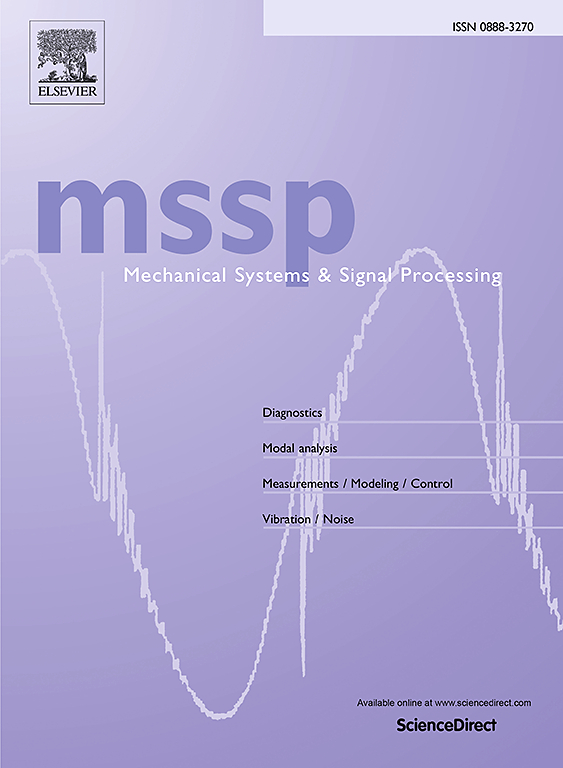IF 7.9
1区 工程技术
Q1 ENGINEERING, MECHANICAL
引用次数: 0
摘要
在启动过程中,由于与转子的表面接触,顶箔表面会发生磨损,这是导致气膜轴承失效的重要原因。因此,研究气膜轴承的启动行为对于改进结构设计和延长使用寿命至关重要。本文提出了一个瞬态模型来研究箔轴承-转子系统在启动过程中的三动态性能,该模型综合考虑了瞬态流体动力压力、箔结构挠度、转子动态运动和多域耦合效应。雷诺方程的计算考虑了气体稀释和表面粗糙度效应。顶箔和凸箔均使用梁元素建模,并考虑了它们之间的紧密/松散接触。为缓解时间滞后问题并提高收敛性,该模型以完全耦合的方式进行数值求解。建立了一个试验台进行验证。模拟结果表明,在启动初期,流体动力和表面接触力会出现明显的波动。气膜内产生的次环境压力导致顶箔和凸块之间的分离。此外,还评估了名义间隙、加速时间和表面粗糙度对启动过程中铝箔轴承-转子系统摩擦动力性能的影响。本文章由计算机程序翻译,如有差异,请以英文原文为准。
A fully coupled model for tribo-dynamic performance analysis of gas foil bearing-rotor system during start-up
The wear taking place on the top foil surface due to asperity contact with the rotor during start-up is a significant contributor to the failure of gas foil bearings. Hence, research on the start-up behaviors of foil bearings is crucial for improving structural design and extending service life. This paper presents a transient model to investigate the tribo-dynamic performance of foil bearing-rotor system during start-up, which comprehensively considers transient hydrodynamic pressure, deflection of the foil structure, dynamic motion of the rotor and multi-domain coupling effect. The Reynolds equation is formulated with consideration of the gas rarefaction and surface roughness effects. Both the top foil and bump foil are modeled using the beam elements, between which the close/loose contacts are considered. To alleviate time-lack issue and improve convergence, this model is numerically solved in a fully coupled manner. A test rig is established for validation. The simulations reveal that the hydrodynamic and asperity contact forces show obvious fluctuations in the initial period of start-up. Subambient pressure occurs within the gas film, causing the separations between the top foil and bumps. Besides, the effects of nominal clearance, acceleration time and surface roughness on the tribo-dynamic performance of foil bearing-rotor system during start-up are evaluated.
求助全文
通过发布文献求助,成功后即可免费获取论文全文。
去求助
来源期刊

Mechanical Systems and Signal Processing
工程技术-工程:机械
CiteScore
14.80
自引率
13.10%
发文量
1183
审稿时长
5.4 months
期刊介绍:
Journal Name: Mechanical Systems and Signal Processing (MSSP)
Interdisciplinary Focus:
Mechanical, Aerospace, and Civil Engineering
Purpose:Reporting scientific advancements of the highest quality
Arising from new techniques in sensing, instrumentation, signal processing, modelling, and control of dynamic systems
 求助内容:
求助内容: 应助结果提醒方式:
应助结果提醒方式:


